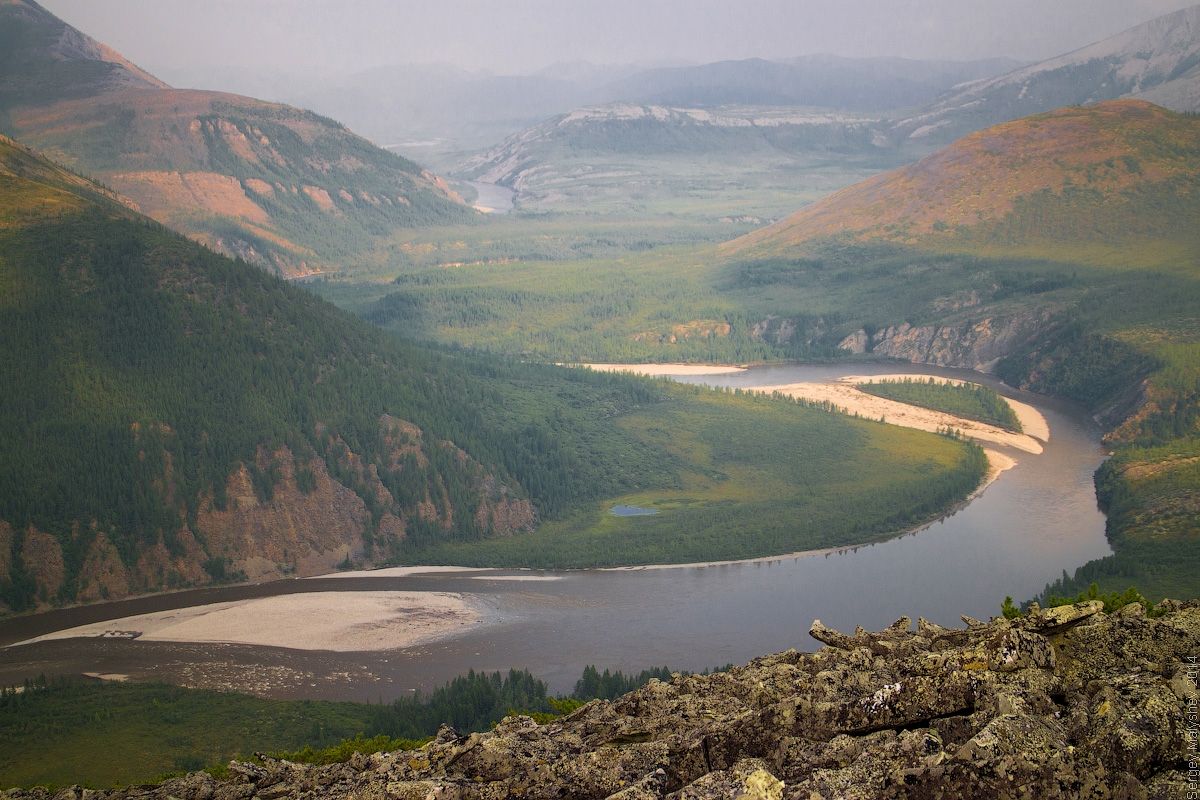Siberian basalts enable scientists to date the breakup of the ancient supercontinent
A team of scientists, comprising experts from St Petersburg University, came to the conclusion that the break-up of the ancient Nuna (Columbia) supercontinent could have happened much earlier than it was previously assumed. The researchers were prompted to explore this hypothesis after studying basalts of the Sette-Daban Range, Republic of Sakha (Yakutia). Analysis of the rocks properties showed that their age is approximately 1.4 billion years.

Sette-Daban, Eastern Yakutia. Photo by: Sergey Malyshev
The Boring Billion, otherwise known as the Barren Billion of Earth’s history, is the time period between 1.9 and 0.9 billion years ago. It is characterised by tectonic quiescence on the planet and a lack of evidence of large-scale collisional events. Nonetheless, during this period there were large igneous provinces (LIPs), which are associated with rapid climatic changes and mass extinctions. The formation of LIPs is attributed to large quantities of basaltic magma flowing upward onto Earth’s surface. Until recently it was believed that the Boring Billion period on the Palaeosiberian continent was marked by quiescence of tectonic and magmatic activity in it.
The scientists studied the chemical composition and radioisotope age of samples obtained from a mafic dyke (a fracture in a rock that was filled with a magmatic melt) in the core of the Gornostakh Anticline (Sette-Daban Range, Eastern Yakutia).
‘In this paper we deal with the question of the Nuna (Columbia) supercontinent reconstruction and formation of Rodinia; in particular, the time of break-up of Siberia from Baltica. Our data allowed us to show that about 1.4 billion years ago, there was a large igneous province that covered the northern and eastern parts of Siberia and, possibly, extended to the western part of Baltica (covering the Mashak LIP). A hypothetical LIP could have triggered rifting processes (the stretching of Earth’s crust) at the junction of the continents causing the subsequent split between Baltica and Siberia in Mesoproterozoic (1.6–1 billion years ago). Eventually this could have initiated the beginning of transition from Nuna to Rodinia configuration,’ explained the first author of the article Sergey Malyshev, Associate Professor in the Department of Geochemistry at St Petersburg University.
Nuna (Columbia) is a hypothetical supercontinent that existed in the Statherian period (1.8-1.5 billion years ago) of the Palaeoproterozoic era. This makes it one of the oldest supercontinents.
The research was supported by the Presidential Programme of the Russian Science Foundation (project No 19-77-10048).

